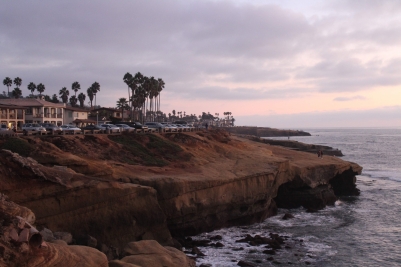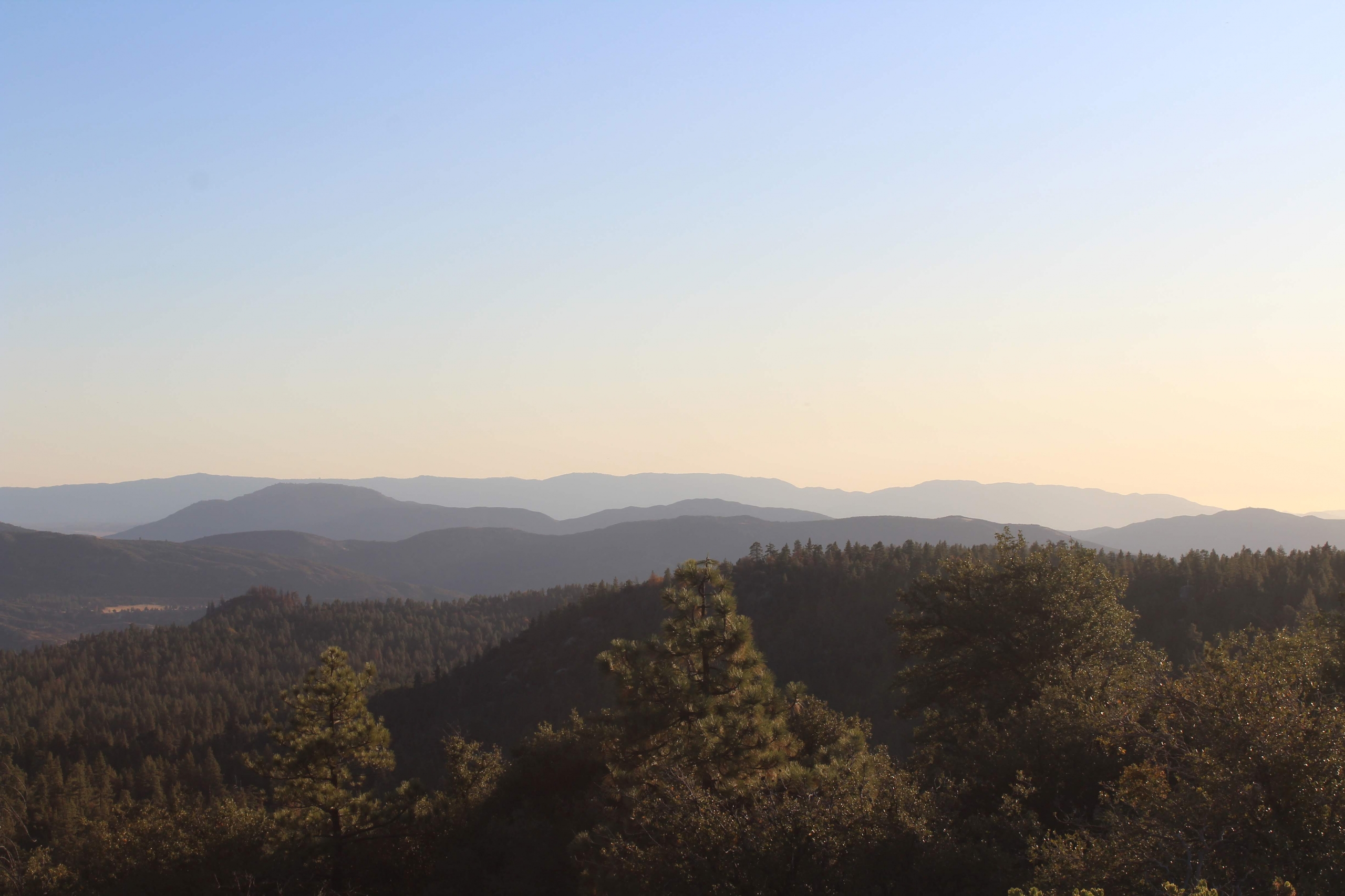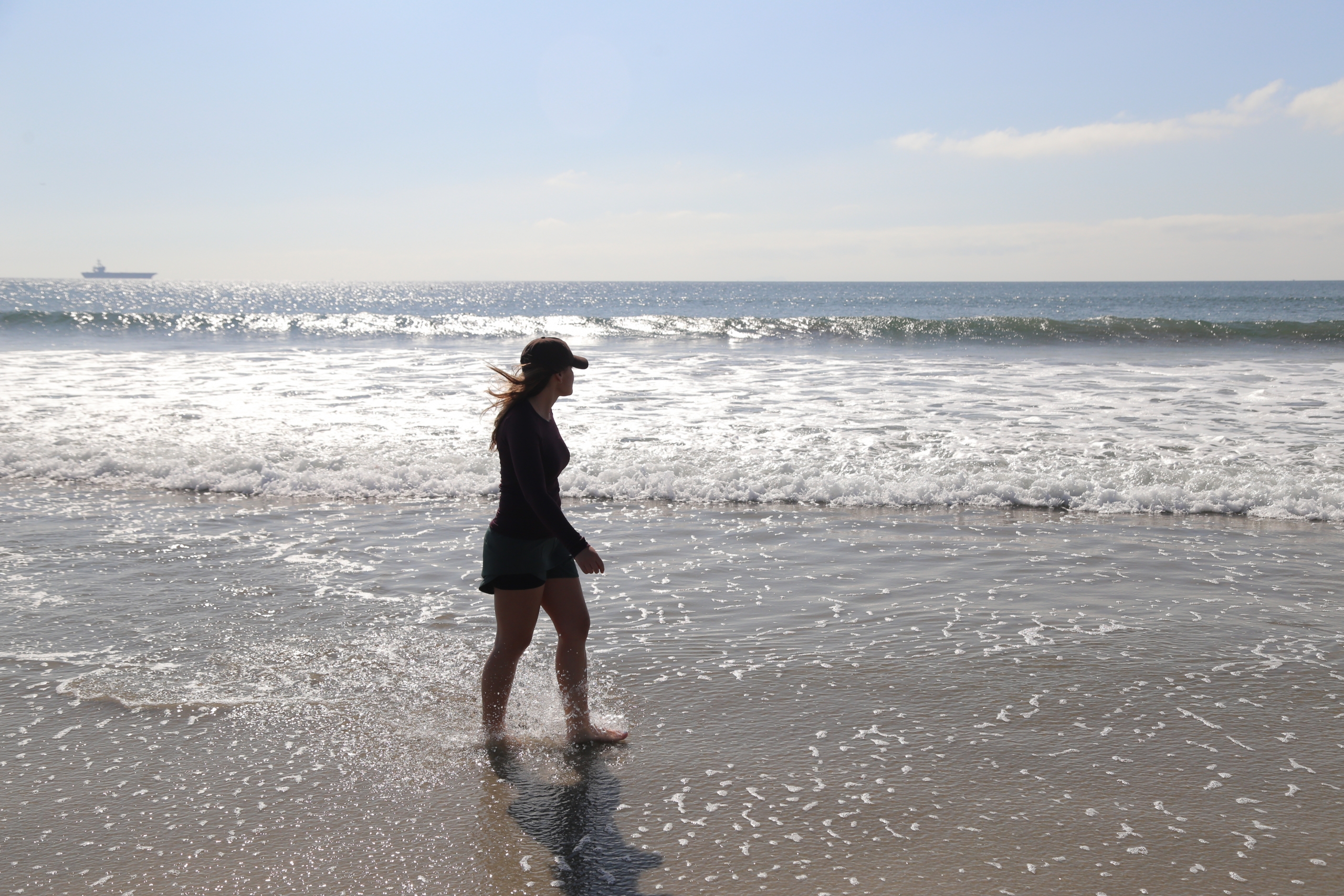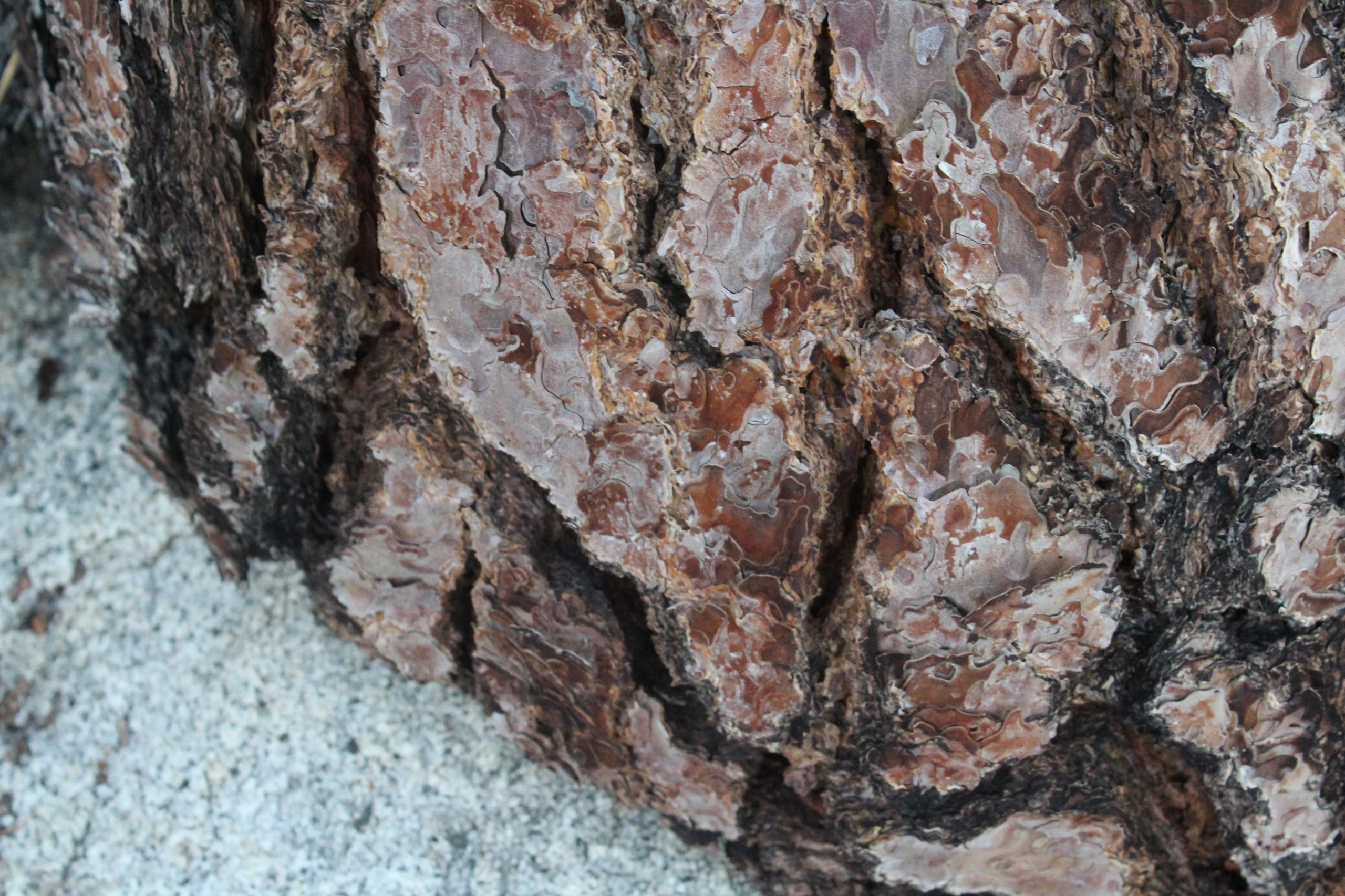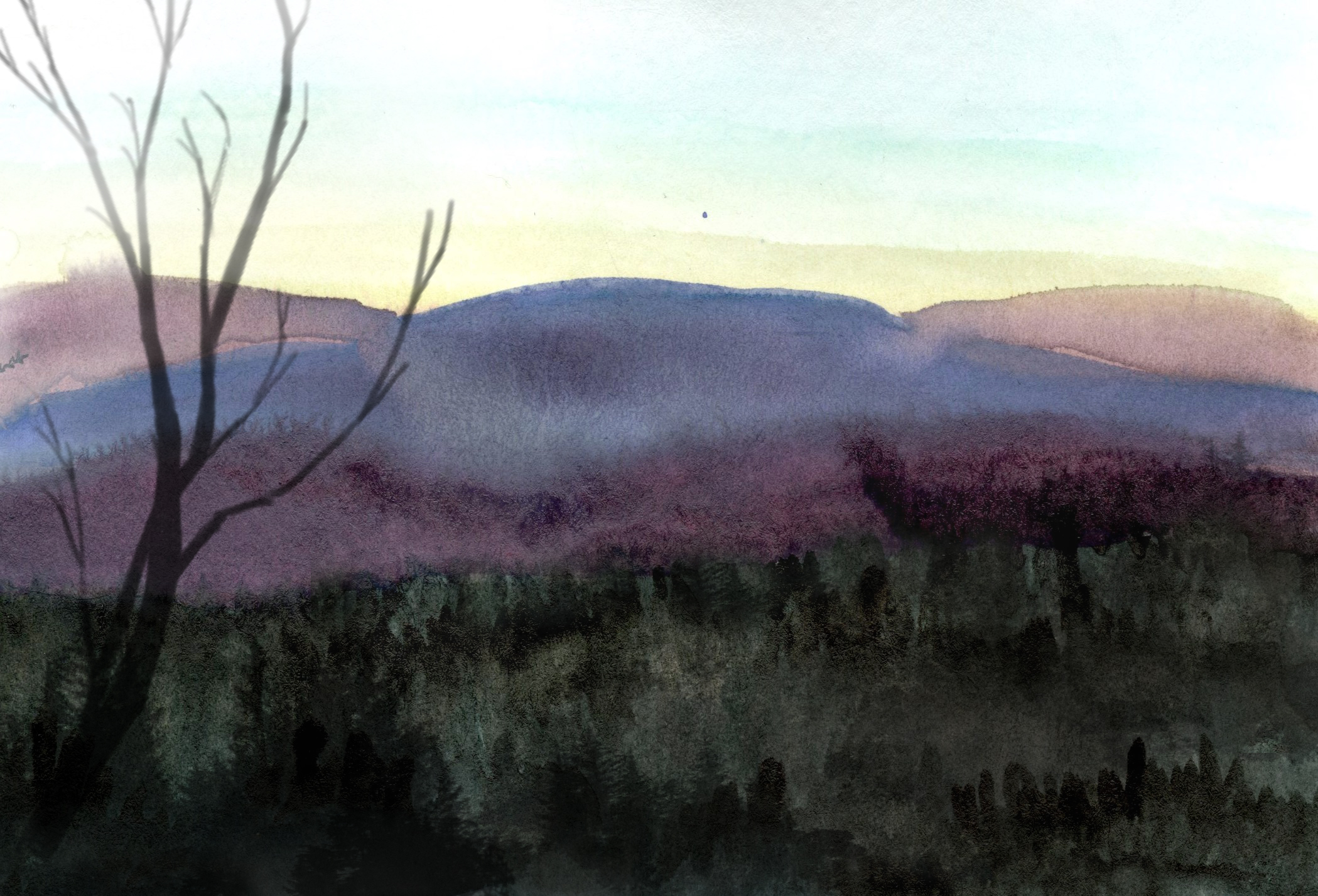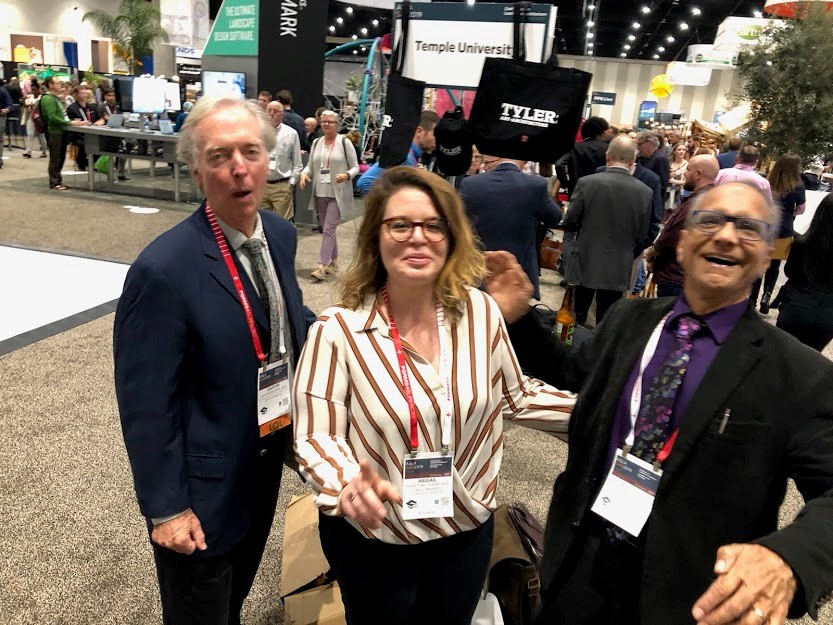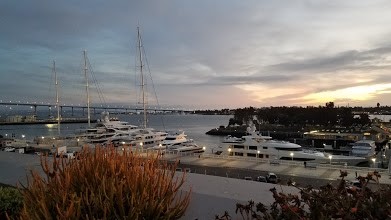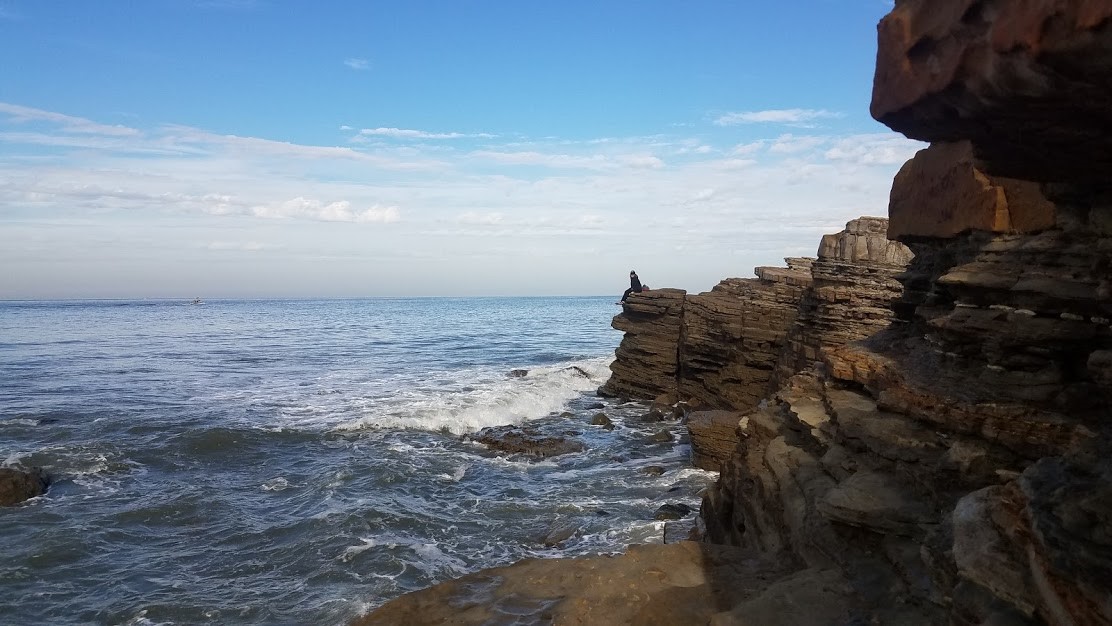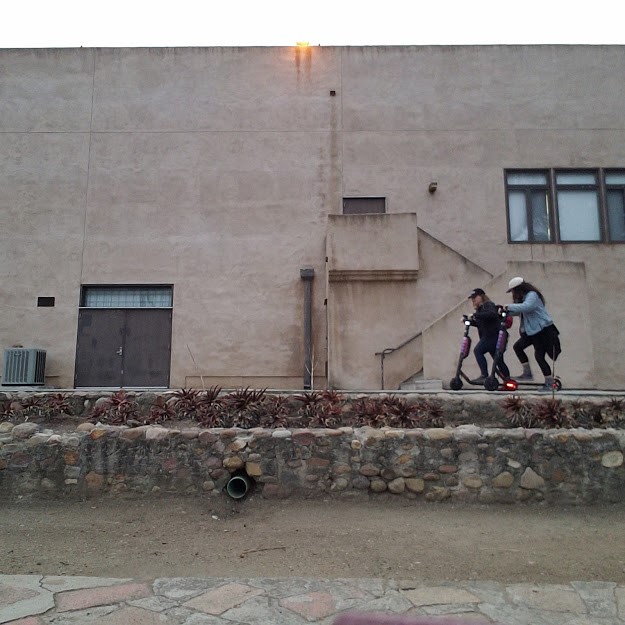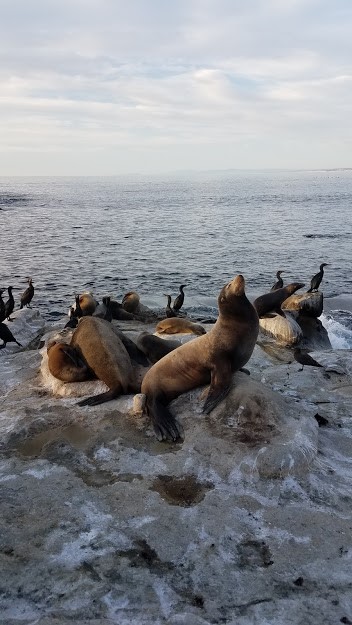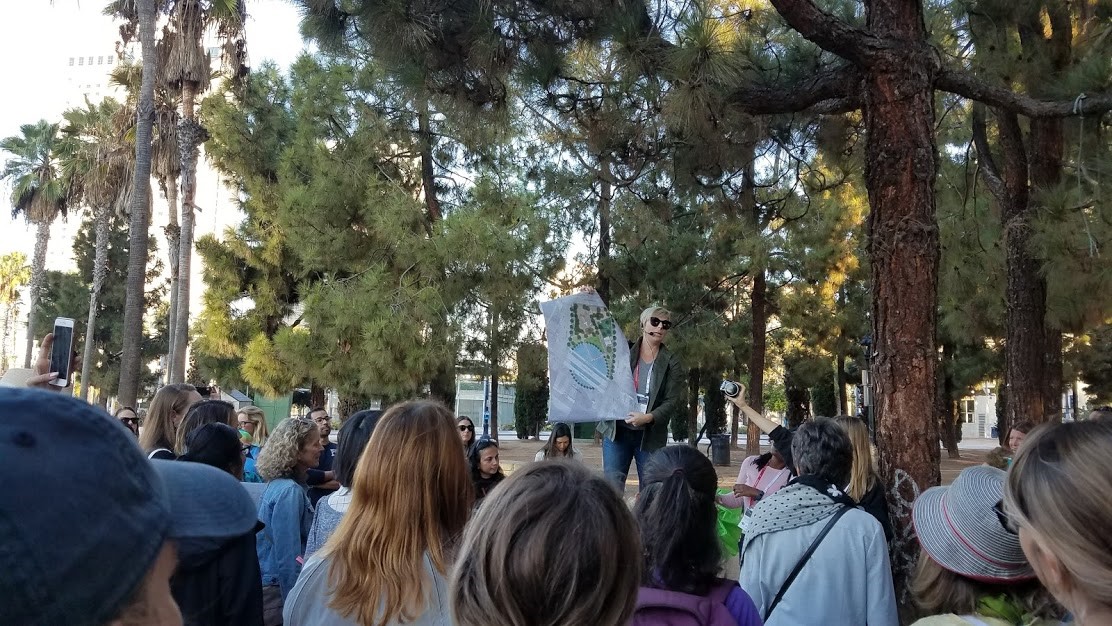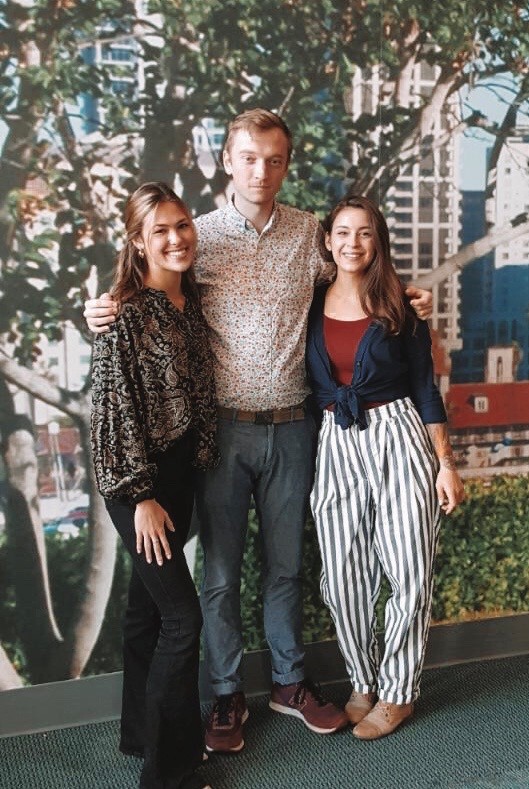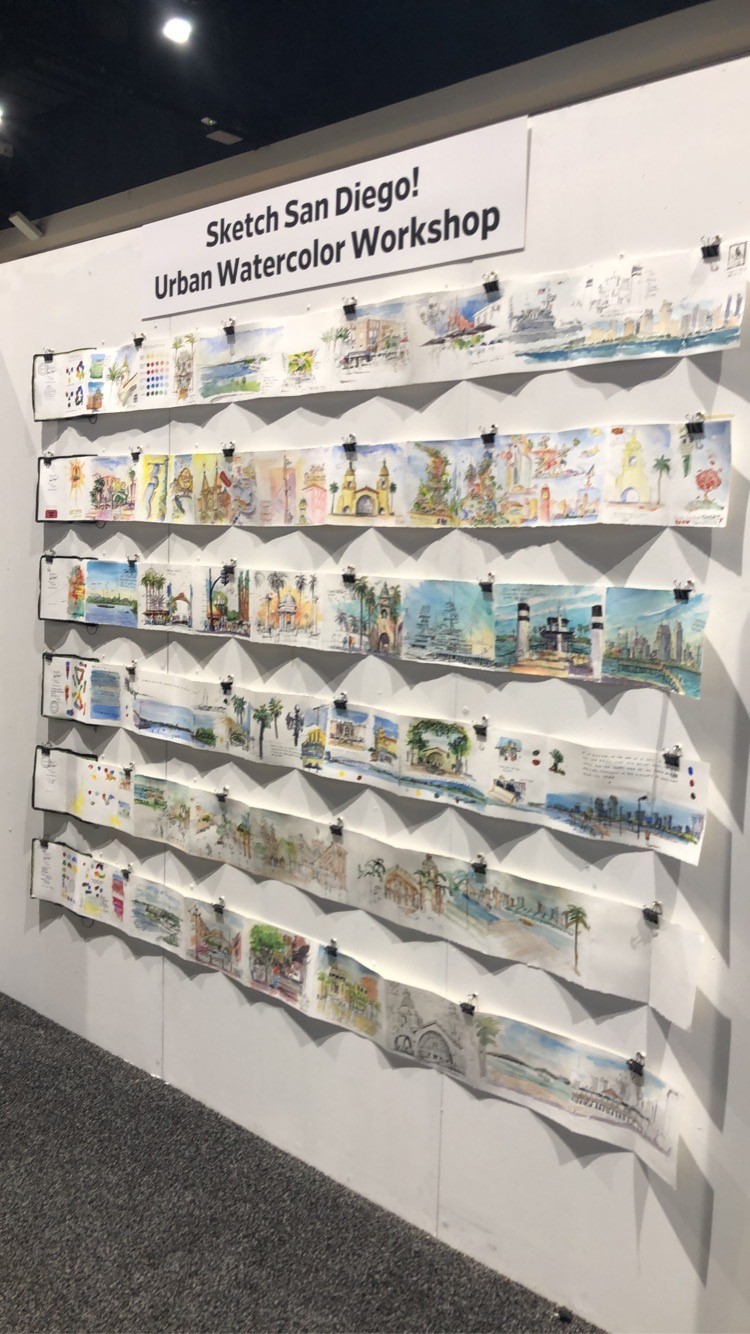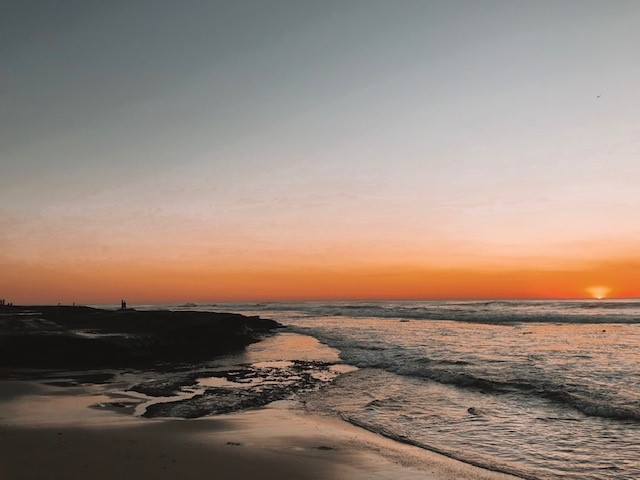Journey to the ASLA Conference on Landscape Architecture
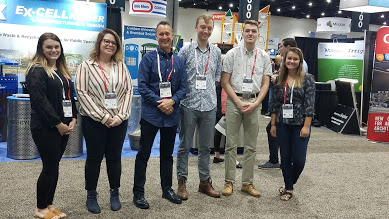
With the support of PA-DE ASLA Student Scholarships, six landscape architecture students from Pennsylvania and Delaware (shown here with PA-DE ASLA President Richard Rauso, RLA, ASLA) traveled to the 2019 ASLA Conference on Landscape Architecture in San Diego, CA in November 2019. Below, they individually recount their conference and exploratory experiences.
Trip Reflection
Darby Mann
BLA Landscape Architecture ‘21
Student ASLA Chapter President
Jefferson University (Philadelphia University + Thomas Jefferson University)
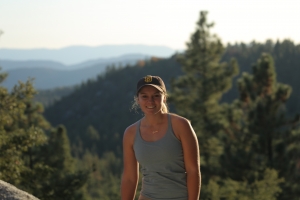
I’m so thankful to have gotten the chance to go on this trip, as it’s probably the most influential experience of my college career. The ASLA Conference on Landscape Architecture session speakers inspired me to see urban landscapes in a different light, and as their own version of wilderness.
I’m motivated to engage with communities now that I have new ideas of how to program space as a dynamic platform for arts and music. Specifically, the session about the “Urban Wild-Unclaimed Landscape & Love the Bulb” demonstrated how to embrace the current state of an urban space by celebrating the homeless population that lived there. It was also very helpful to see different perspectives on managing stormwater, as I am closely studying Philadelphia’s “Green City, Clean Water” approach. The keynote speaker, Gina McCarthy was so empowering, opening up the conversation on climate change, and how we, specifically landscape architecture students, can save the planet.
The expo was great as I got to see a bunch of cool products I didn’t even know existed. Some things I’ve used in prospective projects, so it was neat to see them in real life. I really enjoyed seeing the watercolor sketches; they all had a different style to them!
During downtime, I took the opportunity to further explore the greater San Diego area. Two of the other chapter presidents and I, Liam and Olivia, rode the ferry to Coronado Island and inspected the unfamiliar yet fascinating plant species. I got to check out Sunset Cliffs, a breathtaking site off the coast where the colors of the sky changed so fiercely over the surfers. Two students from Jefferson were with me and we all decided to check out Idyllwild one afternoon. It was less than a two-hour drive and the landscape completely changed in that short distance. The town is more than a mile in elevation, and the mountains were the perfect backdrop for our hike. We studied all the different plants, rocks and wildlife! The colors, light, sounds, and textures are so different that what we are used to on the East coast, that this itself was so educational.
The whole conference challenged me in such a great way. I learned that there are so many different perspectives and corners of landscape architecture. It was challenging to put myself out there as a vulnerable student when meeting experienced professionals, but every experience was so positive. I’m so happy to have met the people I did and become friends with the other students in attendance.
Image credits: Darby Mann
ASLA 2019 Conference in San Diego Recap
By Abigail Long
Temple University
Student Chapter Co-President
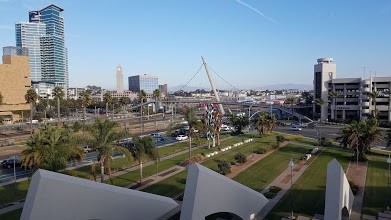
(View from outside of the conference center)
Opening Session: From Climate Change to Climate Action: Building a Clean, Healthy, Sustainable Future
Speaker: Gina McCarthy (Former EPA Administrator under the Obama Administration and Director of the Harvard T.H. Chan Center for Climate, Health, and the Global Environment)
I had never heard of Gina McCarthy before attending the opening session, but I won’t soon forget her name. Every person I talked to was wide-awake and inspired after listening to Gina urge the profession of landscape architecture to do something about climate change. She implored professionals and students alike to use our skills, talent, and craft to make meaningful change and stand up for a world that so badly needs defending right now. She also made a good point in that, when talking about climate change, people have a hard time relating to melting glaciers and icecaps on the other side of the world. It’s important to use tangible, relatable examples, such as health, when demonstrating the effects of climate change.
Boots on the Ground: Measuring Landscape Performance in the Field
Speakers: Emily McCoy (Design Workshop), Danielle Pieranunzi (SITES), Dr. Kathleen Wolf (University of Washington), Michele Adams (Meliora Design)
As I’ve progressed in my academic career in the landscape architecture program at Temple, I’ve been able to grasp just how important the role of research is within the field. I’ve been increasingly interested in exploring research in our industry and am considering graduate school, so I was very much excited to attend this lecture. It did not disappoint.
Key takeaways:
- Defensible science is the most important part of any research being conducted. You must be able to defend your research and your findings.
- The more data you collect, the better the science.
- Some of the most important research being done regarding sustainable design is happening in Philadelphia. Emily McCoy talked about the methods of research she was involved with in the design of Shoemaker Green by Andropogon Associates.
- Random fact: In some cases, trees can emit more (embedded) carbon than they sequester when considering transportation and maintenance. So, it’s extremely important to consider a tree’s lifespan when specifying trees for a project.
Landscape Resiliency Through Integrated Planting Design and Management
Speakers: Travis Beck (City of Santa Cruz), Larry Weaner (Larry Weaner Landscape Associates), Laura Hansplant (Roofmeadow)
Key takeaways:
- It’s important to study and understand plant communities in designing for resilient landscapes rather than only focusing on excellence in individual plants.
- Sometimes a little competition among plants can be a good thing for long lasting plants. Fewer resources will make plants more adaptive and fitter for the long haul.
- Land management and maintenance of projects is something that needs to be considered at the beginning of every project. Considering how a client will and is able to maintain a landscape for years to come should be at the forefront of each design decision.
- Making mistakes makes you a better designer. Larry Weaner talked about how he’s learned the most from the mistakes he had made in projects rather than the successes.
After Whyte: The Social Life of Small Urban Spaces Forty Years Later
Speakers: Emily Schlickman (University of California), Thomas Balsley (SWA/Balsley), Stella Kim (New York City Department of City Planning)
My class has had William Whyte’s formulas for successful public spaces drilled into our heads by our past two studio professors, so I was interested in hearing about the findings of the new research that has been done of revisiting Whyte’s The Social Life of Small Urban Spaces. The project studied 10 plazas in Manhattan that have been constructed in the last 15 years.
Key takeaways:
- While many things still stand true 40 years later after Whyte’s research, some things have changed. For instance, instead of people gathering in public spaces to chat or “people watch” most people dwell in public spaces individually and are looking down at their phones.
- In many cases, public spaces are hyper-programed (think yoga, outdoor movie theatre, etc.), not allowing much flexibility for naturally occurring entertainment.
- The technology that is used in a project like this has drastically changed since Whyte’s era of simple people watching and video recording. Along with behavioral observations and hand tabulations, the SWA group used heat maps to measuring dwelling time and video footage that automatically analyzed data.
What We’re Getting Right: Working Toward Gender Parity in Landscape Architecture
Speakers: Kate Douglas Kestyn (BrightView Design), Christine L. Hilt (CLH Design), Roberto J. Rovira (Florida International University/Studio Roberto Rovira), Rebecca Leonard (Lionheart Places)
Since I will be graduating and joining the workforce soon, I thought it would be a good idea to get a clearer picture on how the profession of landscape architecture compares to others in its equitable treatment toward women in the field. The Vela Project, created by Tj Marston, Samantha Solano and Catalina Dugand explores why the rate of women in the field of landscape architecture drops off post-graduation and sets out to examine why the picture becomes even bleaker when examining the data of women in leadership roles. This session was extremely informative, but sobering, to say the least.
Key takeaways:
- Women are outperforming men in almost every category of academic statistics (BLA and MLA graduates – 55% women, ASLA student awards – 55% women, and Olmsted scholar awards – 66% women) but only 27% of licensed landscape architects are women.
- Only 16% of professional awards (ASLA Awards + Council of Fellows) are awarded to women.
- Only 12% Advanced career leadership positions (ASLA presidents) are held by women.
- Almost no men were in the room for this lecture.
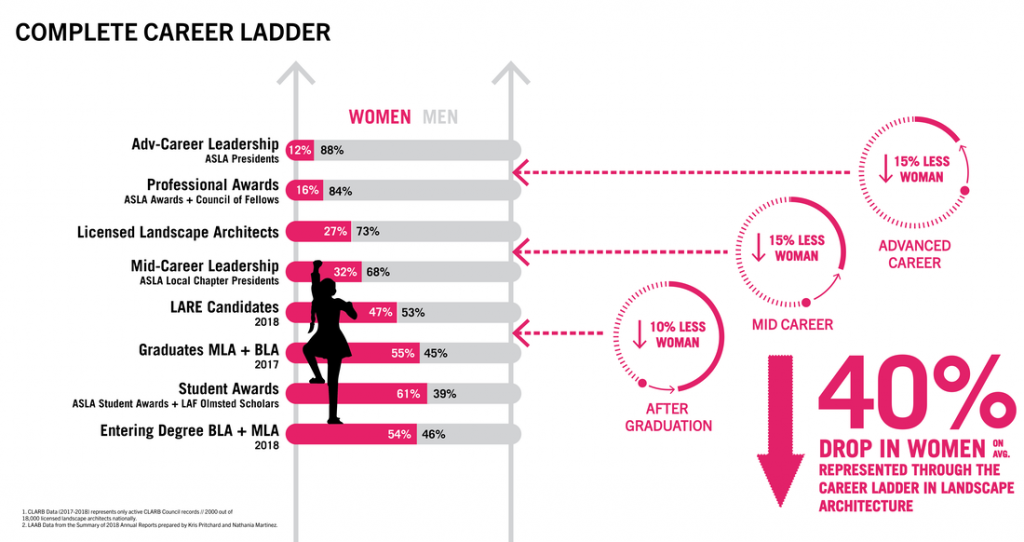
Source: http://www.velaproject.org/complete-ladder.html
To find information on the project and to see their findings visit: http://www.velaproject.org/
Other lectures I attended:
Breaking Free from Tropical Hardwoods: New Alternatives for Sustainability
Speakers: Meg Calkins (North Carolina State University), Laura Solana (Michael Van Valkenburgh), Thomas C. Amoroso (Andropogon)
Queer Urbanism and Design: Past, Present, Future
Speakers: Sam Sikanas (W Architecture & Landscape Architecture), Addison Vawters (New York City Department of Housing Preservation & Development), Emilio Martinez Poppe (Fourth Arts Block)
Inside the LA Studio with Andropogon
Speakers: Jose Alminana, Darron Damone, Thomas C. Amoroso, Lauren Mandel
ADA to Universal Design: Creating Healthy Communities Through Equitable Design Approaches
Speakers: Peter Caldwell (Asakura Robinson), Luis Gerardo Guajardo (Asakura Robinson), Jesus “Chuy” Lardizabal (Altura Solutions)
Design with Nature- Fifty Years Later
Speakers: Frederick Steiner (University of Pennsylvania), Anne Whiston Spirn (Massachusetts Institute of Technology), Carter van Dyke (Carter van Dyke Associates), Baldev Lamba (Temple University)

Design with Nature panel (L to R – Lamba, Spirn, Dyke, Steiner)
Measuring What Matters: Metrics to Capture the Social Impacts of Public Spaces
Speakers: Lynn Ross (Spirit for Change Consulting LLC), Alexa Bush (City of Detroit)
Other experiences:
- Student Climate Crisis Forum
- Alumni tailgate
- Women in Landscape Architecture walk through downtown San Diego, exploring open space projects designed by women in the group
- Meeting with PA-DE ASLA President Richard Rauso, and getting to meet the other Student ASLA Chapter presidents
- A free afternoon to explore San Diego. I travelled to La Jolla Cove and went on a guided kayaking tour to learn about the area’s unique ecosystem. A sea lion even came up and gave my boot a tap!
(Image credits: Abigail Long)
Thank You! ASLA San Diego Experience
Olivia Boon
University of Delaware, Class of 2021
Bachelor of Science in Landscape Architecture
President | ASLA Student Chapter at the University of Delaware
Student Member | American Society of Landscape Architects
Intern | Delaware Resilience Awareness Project
In complete and utter sincerity, I am so grateful for the experience ASLA has provided me as a student chapter president. Thanks to the PA/DE Chapter, I have made invaluable connections. I also learned more about the field of landscape architecture and the possibilities I can pursue. I cannot wait to continue my involvement in this organization and career.
Below you will find some photos from my experience at San Diego. The first photo is of me with the President and Treasurer of the Delaware Valley Student Chapter, Liam Allenstein-Lyon and Emily Latron. The following photos are of Jim Richards’ sketch walk exhibition and La Jolla Beach.
ASLA Reflections
Cari Krol
Master of Landscape Architecture, Candidate
Student ASLA Chapter President
University of Pennsylvania
EXPO
I found the expo to be a great networking and learning opportunity. Often, I think we forget about all of the collaboration that goes into built work and the expo provided a valuable opportunity to meet the people behind the products that we work with every day in the profession (lighting, paving, furniture). The companies also present the vast opportunity of career type and choices within the landscape architecture realm, especially for those who would not want to go into traditional design/firms.
LECTURES
I found it overwhelming to decide what lecture to go to simply because there were so many interesting options. I appreciated the spread in topics. Ultimately, I decided to attend the more socially-driven talks. I appreciated how these talks focused on very current issues including climate change, social justice, and police shootings. I found these talks encouraging and inspiring to see how many other professionals are interested in socially driven design.
CLIMATE CHANGE FORUM
For me, the highlight of the conference was the Climate Change forum in response to the ASLA adapt open letter. It is obvious that climate change is an important and pressing issue that needs to be addressed. I appreciated the quick response from ASLA and the setting that was arranged to allow for people to openly express their thoughts, concerns, and opinions on the topic. It is encouraging that this forum is a key first step.
LOCATION
I found San Diego to be a great location for this conference. Not only was the weather beautiful, it was a big change in landscape for those of those traveling from the East Coast chapters. During the breaks in lectures, I found myself exploring the west coast landscape through visiting Balboa Park’s botanical gardens and Japanese Friendship Garden, Coronado beach, and La Jolla Cove.
FINAL THOUGHTS
As the only representative for the graduate school in our chapter, I found myself in a unique perspective for the ASLA conference. Having the opportunity to connect with the undergraduate students in our chapter, it was a learning experience for me. I was able to gain insight into the undergraduate programs and what topics those students are focused on. It was also exciting to learn about shifts in undergraduate curriculum. It was clear how the ASLA conference is a huge benefit for those students in Landscape Architecture undergraduate programs. The expos and lectures really give those students insights into the professional world and a look into the many career paths within the field. These insights could help be a deciding factor on graduate school and a continuation into the profession.
For myself, a graduate student, I found that the conference provided helpful insight to learn about what topics current professionals/companies/firms are focused on. Overall, the conference brings people within the profession together from all over the country and provides great networking and educational opportunities. It was a pleasure to meet all of the other chapter members face to face!
ASLA 2019: Experiences and Reflections
Frank J. Mader
The Pennsylvania State University | Class of 2020
College of Arts and Architecture | Bachelor’s of Landscape Architecture
Landscape Architecture Student Society | President
Deep Dive Session
Friday kicked off the deep dive session about landscape performance and the Landscape Architects’ role in ensuring landscapes carry out their intended functionality. This included many aspects of sustainable site design and how landscape architecture can be crafted into a defensible science. During the beginning phases of the project’s design, measures taken to reach a defensible design were considered before the methods of the actual design were formulated. Creating a scientific approach by asking what kind of data sets need to be gathered, what physical limitations are present, and what results are desirable are crucial components to building a defensible method of design. In order to achieve a method of designing with concrete scientific foundations, the landscape architect’s role includes conducting measurements of the sites biologic and hydrological functions which build a library of scientific data to back up a strong landscape design.
Education Session
As stewards for public spaces, our profession is not new to making space available for everyone. This education session however, gave insight to the true meaning of equitable, diverse, and inclusive landscapes. As for the parks in the five boroughs of New York City, data has shown that proximity and quantity of this green space is readily available across the city. What is often times excluded from this data is the quality of this open space and how attracted people are to use it. Mitchell Silver, commissioner of NYC parks not only presented recent improvements to failing public space around the city, but also what it meant to give equitable and inclusive properties to these spaces. The lasting message from his presentation reminded landscape architects in this scope of work is that “improving the landscape too well” for fear of changing the neighborhood’s dynamic is irresponsible. The means of adding diversity and inclusivity to landscape design is obtained through a diverse value of perspectives and fairness to all who want to interact with it. Our responsibility is not to fight these problems by limiting design, but rather to design the landscape in an abundance that will promote a fair and enabling atmosphere for all.
Experiences
In the few spare hours that I had away from the main events of the conference, I took some time to hike from the Gaslamp District up to the historic and world famous Balboa Park. The lath structure of the Botanical building caught my eye and proved to be an excellent opportunity to photograph a wide array of plants in a unique lighting situation. Tropical palms, towering cyads, and vibrant orchids all found different beams of the afternoon sunlight through the permeable structure overhead. This biological oasis gave me time to reflect on the list of education sessions that I had attended that weekend.

